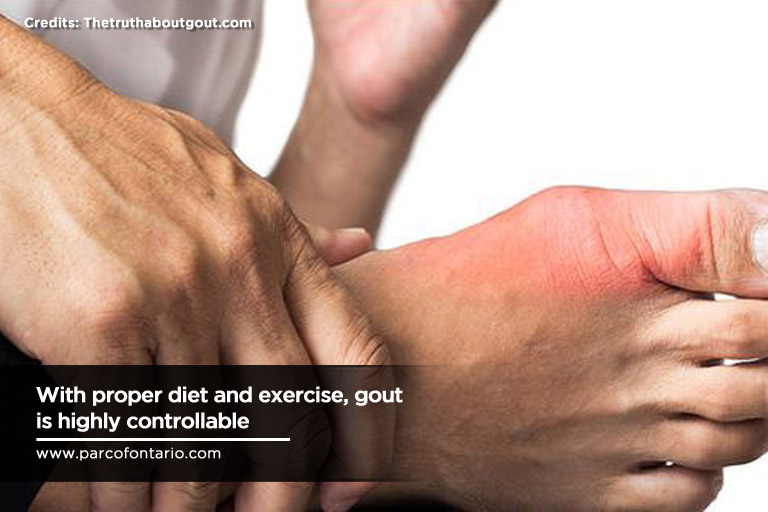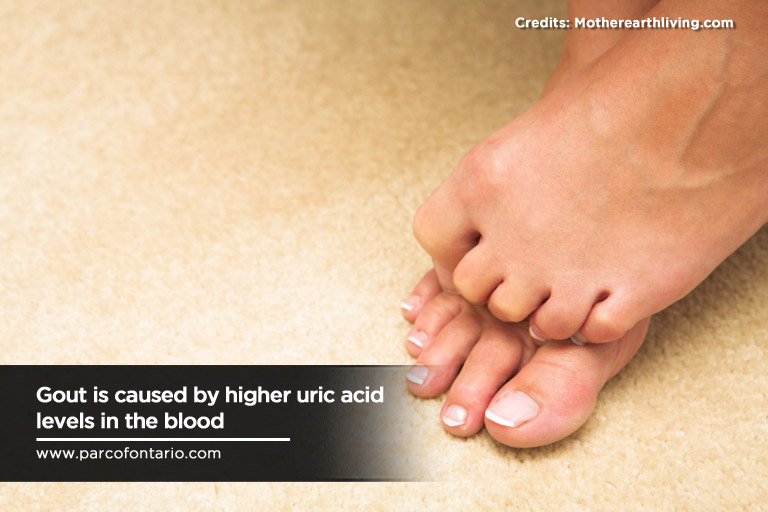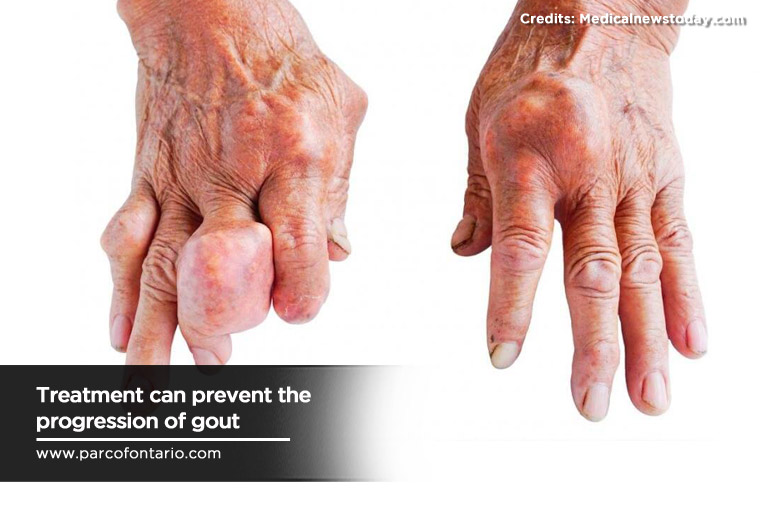What Men (And Women) Need To Know About Gout

Gout is a commonly-experienced form of inflammatory arthritis for many people around the globe. An estimated three percent of Canadian adults have suffered from gout in their lifetimes. Both men and women can develop this disease; however, studies suggest that men 63 and above are at a higher risk of developing gout than women. The instance of gout has significantly increased over the last decade in Canada.
In this article, we will learn more about gout and how men and women can prevent this disease as they advance in years.

What Is Gout?
Gout develops when there are high uric acid levels in the blood (also called hyperuricemia). As a result, tiny crystals of uric acid form and accumulate in the joints. Gout causes mild to severe joint pain and redness and swelling in the toes.
The production of uric acid takes place when the body breaks down chemicals that naturally occur in the cells and in certain foods that are rich in protein. The blood takes and stores the uric acid to the kidneys until it is disposed of through the urine.
An excessive amount of uric acid in the bloodstream results in the formation of small crystals in the joints. Eventually, these crystals can build up underneath the skin and create hard bumps known as tophi. These acid crystals can also develop in the kidneys and later on become kidney stones.
Uric acid concentration is influenced by the following factors:
- High production of uric acid
- The inability of the kidneys to eliminate uric acid from the blood
- Certain medical conditions, like cancer, kidney disease, or diabetes

Risk Factors
While there may be a genetic predisposition to gout in some individuals, gout is primarily triggered by lifestyle factors. These risk factors include:
- Diet – A diet rich in sugar or fats, like red meat, shellfish, and highly refined carbohydrates can increase uric acid levels in the blood. The brewer’s yeast in beer can worsen gout symptoms.
- Obesity – Overweight persons are at a higher risk of developing gout, compared to those with lower body weight.
- High blood pressure – Blood pressure medicines (diuretics) can increase the chances of developing gout. Low-dose aspirin and medications that impede the immune system can also increase uric acid.
- Chronic dehydration – Lack of fluids causes uric acid concentrations to rise, and the kidney’s capacity to excrete excess uric acid decreases.
- Kidney problems – Mild kidney disease slows down the excretion of uric acid out of the body.
- Trauma – Gout can be influenced by physical trauma (surgery, heart attack) and emotional stress.

Symptoms Of Gout
Gout often attacks the base of the big toe, the joints, or the lower limbs (knees, feet, and ankles). Gout symptoms can flare up and disappear quickly. Initial flares may last between three to ten days and may recur (and last longer) without treatment. When left untreated, recurring attacks can permanently damage the joints, so early diagnosis and proper treatment is critical.
Common symptoms of gout:
- Swelling – The joint may become swollen and puffy, and may look like an injury.
- Severe pain – This pain may peak within the first 12 to 24 hours of the attack.
- Redness – A painful and swollen joint may turn red in colour.
- Stiffness – Serious and recurring cases of gout can make your joints feel stiff.
- Warm sensation – The affected joint may feel warm to the touch.

Types Of Gout
There are four different forms of gout. Frequently, gout can progress from a less severe stage to a more severe form if it is left untreated.
- Asymptomatic hyperuricemia – A patient with increased levels of uric acid may not exhibit symptoms of gout, although elevated uric acid may already be affecting the sufferer’s joints. Doctors may advise a person with asymptomatic hyperuricemia to take aggressive measures to address risk factors in their lifestyle.
- Acute gout – At this point, a person with high uric acid levels may experience intense pain and inflammation in the affected joint (commonly known as a “flare”). In some cases, flares are triggered by alcohol and drug intake, stress, and cold weather.
- Intercritical or interval gout – Gout flares may not happen for months to years. However, when ignored, urate crystals may get deposited in the tissues during this period, making future flares more prolonged and intense.
- Chronic tophaceous gout – A patient with chronic tophaceous gout can experience chronic arthritis and develop larger lumps of urate crystals in the joints of the toes or fingers. Proper treatment and medication can often prevent the disease from reaching this debilitating stage.
If you find yourself in any of these stages, consult a doctor right away for an accurate gout diagnosis. A reliable rheumatologist in Ontario has the expertise and tools to diagnose, cure, and manage gout, even when it is at its complex stage.
One of the ways rheumatologists do this is by sampling out fluid from your joint and examining it under a microscope to detect the presence of uric acid crystals. This test is necessary because there are certain medical conditions with similar symptoms to gout, like pseudogout (another type of arthritis triggered by the calcium deposits in the joints), and prevent misdiagnosis.
In addition to clinical tests, your rheumatologist will also ask you about your diet and medications. They will trace when your symptoms started showing, how long your flares last, their intensity, and which joints are affected.

Managing Your Gout
A huge part of managing your symptoms is by committing to a lifestyle change. Here are a few ways to implement these changes:
- Eat healthily. Skip foods and beverages that are high in purines. Reduce red meat and shellfish consumption. Drinking low-fat milk helps reduce the chance of gout attacks, as dairy helps flush out uric acid in the body. Limit sugary beverages and drink plenty of water instead. Introduce more fruits and vegetables to your daily diet.
- Limit your alcohol intake. If you can, avoid alcoholic drinks entirely. If you do drink alcohol, limit your alcohol consumption to ten servings per week, with no more than two per day. If you’re uncertain if alcohol is appropriate for your gout condition, consult your doctor first.
- Watch your weight. Being overweight puts you at a higher risk of having gout and gout attacks. Seek the help of your doctor or speak to a certified dietitian to learn how you can achieve a healthy weight. When you can, try to control your portion sizes per meal and eat foods that are rich in fibre.
- Increase your physical activity. A physiotherapist can design a safe exercise program that’s tailored to your fitness level while still ensuring that your joints get the movement they need without wearing them out.
Gout is a highly controllable form of arthritis. With proper diet, medication, exercise, and help from healthcare professionals, you can regain your mobility and improve the quality of your life even in the face of gout attacks.
Here at Physiotherapy and Rehabilitation Centers of Ontario, we offer rheumatologist assessments and much more to help you prevent or heal from gout. We look forward to helping you.









